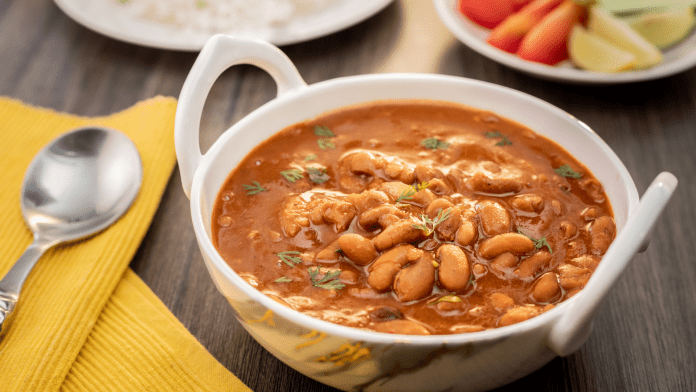Rajma, a popular Indian dish made with kidney beans, is a delightful culinary experience loved by many. However, what many people may not be aware of is the potential health risks associated with improperly cooked kidney beans. These legumes contain a natural toxin called lectin, specifically phytohaemagglutinin, which can lead to food poisoning if not prepared correctly. In this article, we will explore the secrets to safely preparing kidney beans, ensuring that your favorite rajma recipe doesn’t put your health at risk.
Understanding Kidney Bean Toxicity:
The Role of Lectin: Kidney beans contain a high concentration of lectin, a naturally occurring protein that acts as a defense mechanism against pests. However, lectin is toxic to humans and can cause severe gastrointestinal distress if consumed in large amounts.
Phytohaemagglutinin: Phytohaemagglutinin is the specific type of lectin found in kidney beans. It is responsible for the majority of the toxic effects associated with undercooked or improperly prepared kidney beans.
Symptoms of Kidney Bean Poisoning: Consumption of raw or undercooked kidney beans can lead to symptoms such as nausea, vomiting, abdominal pain, diarrhea, and in severe cases, dehydration and hospitalization.
Preparing Kidney Beans Safely:
- Soaking: Soaking kidney beans in water for an extended period before cooking is essential. This process helps to reduce lectin content and improve digestibility. Soak the beans overnight or for at least 8-12 hours.
- Discarding Soaking Water: After soaking, it is crucial to discard the soaking water. This water may contain some of the leached-out toxins, including lectin, so it should not be used for cooking or consumed.
- Boiling: Boiling kidney beans is the most effective method for eliminating lectin and reducing the risk of toxicity. Ensure that the beans are adequately submerged in water and boil them for at least 10 minutes to destroy any remaining toxins.
- Use of Pressure Cookers: Pressure cookers can be a convenient and efficient way to cook kidney beans. They help in further reducing the lectin content and shorten the cooking time. Follow the manufacturer’s instructions for cooking times and settings.
- Proper Cooking Time: It is crucial to cook kidney beans thoroughly until they are soft and tender. Undercooked beans may still contain harmful toxins. The cooking time can vary depending on the size and freshness of the beans, but generally, it takes around 30-45 minutes.
- Avoid Slow Cookers and Crockpots: Slow cookers and crockpots may not reach the high temperatures necessary to destroy lectin adequately. It is advisable to use boiling or pressure cooking methods for kidney beans instead.
- Checking for Doneness: To ensure the beans are fully cooked, check for tenderness by pressing them between your fingers. They should easily mash without resistance.
- Be Mindful of Cross-Contamination: Proper hygiene practices should be followed while handling kidney beans. Avoid cross-contamination with other foods, especially those that will be consumed raw, as it can lead to foodborne illnesses.
Additional Precautions and Tips:
- Purchasing Fresh and High-Quality Kidney Beans: Choose fresh, undamaged kidney beans from reliable sources. Old or damaged beans may take longer to cook and may have a higher toxin content.
- Variety Matters: Different varieties of kidney beans may have varying levels of lectin content. Darker red kidney beans tend to have higher levels of lectin compared to lighter-colored ones. Consider this when selecting the beans for your recipe.
- Moderation is Key: While properly prepared kidney beans can be enjoyed safely, it is still advisable to consume them in moderation. Excessive consumption can potentially lead to lectin-related health issues, especially for individuals with pre-existing digestive conditions.
- Alternative Cooking Methods: If you prefer to minimize lectin content even further, consider sprouting, fermenting, or using canned kidney beans. These methods can help reduce lectin levels, but they may alter the texture and flavor of the beans.
- Storage and Reheating: Proper storage of cooked kidney beans is crucial to prevent bacterial growth. Refrigerate them promptly and consume within a couple of days. When reheating, ensure that the beans are heated thoroughly to avoid any potential bacterial contamination.
Final Thoughts:
Enjoying a delicious rajma recipe can be a delightful experience, but it is essential to prioritize safety when preparing kidney beans. By following the secrets shared in this article, you can minimize the risk of kidney bean toxicity and its associated symptoms. Soaking the beans, discarding the soaking water, boiling or pressure cooking, and ensuring thorough cooking are all vital steps to eliminate lectin and make kidney beans safe for consumption. It is equally important to practice proper hygiene, select fresh beans, and consume kidney beans in moderation. By implementing these precautions and tips, you can confidently prepare rajma and other kidney bean dishes, knowing that you have prioritized both flavor and safety in your culinary endeavors.





